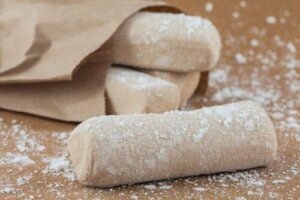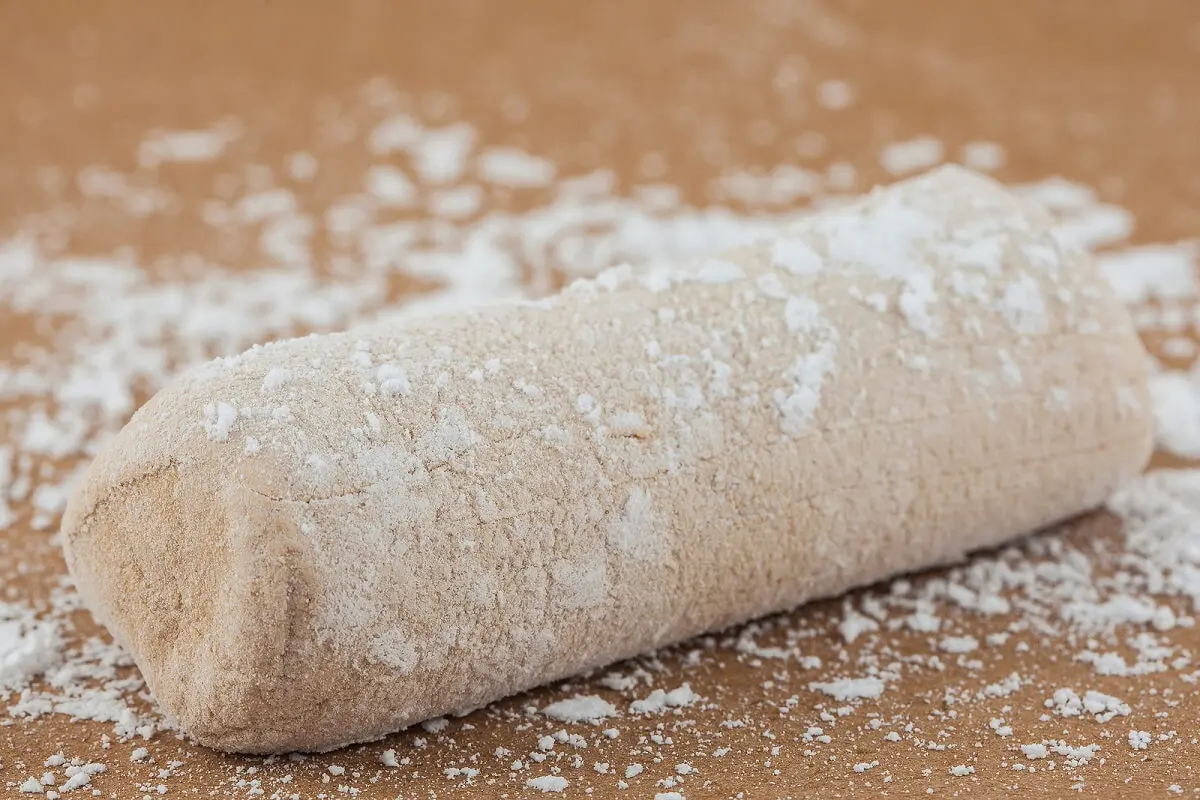Gelatina de Pata: Origin, Properties, and How to Make It


Written and verified by the nutritionist Maria Patricia Pinero Corredor
Gelatina de pata is a typical handmade sweet from Latin American countries. It’s traditionally from Colombia, specifically from the municipality of “Andalucía,” an area that has even been called “the capital of gelatin” or “the land of sweets.”
Although Gelatina de pata began as a handmade sweet, it’s been manufactured in a small industry since the twentieth century. In countries like Venezuela, it’s known as aliados or templones. In addition, its recipe has had some variations, such as the substitution of sugar for panela or the use of colorants.
So, what are the characteristics and benefits of this unique dessert? Let’s take a look!
Characteristics of Gelatina de pata
Gelatina de pata, or leg gelatin, is made with the collagen extracted from the back or front leg of a cow. According to the Colombian Association of Food Science and Technology, it was created in 1917 in the municipality of Andalucía in Valle del Cauca, Colombia. In the 1940s, its production was bolstered, and it soon became the main economic source of the region.
But what exaction is leg gelatin? An article from the Mexican Society of Science and Technology of Surfaces and Materials explains that this is a large, hard and strong protein that supports the structures of the body and cells.
In other words, it’s like a kind of biological cement. It’s found in the skin, ligaments, tendons, and bones of mammals. Experts know it to be a protein that’s rich in amino acids that are essential to the body.
This collagen can be extracted with hot water until it breaks down into smaller, simpler proteins. Once it cools, these proteins coagulate and form leg gelatine.
This can be used to make a unique sweet, which has the following characteristics:
- Elongated shape
- Soft and spongy consistency
- A color that varies according to the type
- A subtle honeyed aroma
To prepare it requires beef leg, sugar, panela, cornstarch, and water. There are some variations in the ingredients, such as the addition of fruit essences, coloring, or sugar. It comes in powder, boxes, cups, and sachets.

Nutritional properties
In a study on the macronutrients of Gelatina de pata gelatine, carbohydrates stand out, since sugar or panela is added. Meanwhile, protein is represented by collagen. This dessert does not contain animal fat, since this is removed during its elaboration.
Below, we’ll present a range of nutritional values per 100 grams of leg gelatine:
- Water: 3.01 – 4.18 grams
- Carbohydrates: 84.27 – 88.57 grams
- Protein: 7.76 – 13.19 grams
- Total minerals: 0.40-0.76 grams
The benefits of Gelatina de pata
The benefits this sweet treat can offer depend on the collagen present in the final product. This protein is part of the architecture and plasticity of many tissues, such as arteries, lungs, liver, and skin, where it performs important functions.
Let’s take a closer look.
1. Gelatine strengthens the hair, skin, and nails
The journal Hospital Nutrition notes that regular consumption of collagen helps reduce the signs of aging, such as fine lines, wrinkles, dryness, and sagging skin. Some specialists also highlight that collagen fibers can repair skin damaged by UV rays in a mouse model group.
Pharmacist M. Teresa Martín points out that our hair and nails are general health indicators. Both are in constant regeneration; therefore, they require adequate nutrition including collagen. Leg gelatin is a source of type I collagen, which is necessary to stimulate the renewal of new cells.
2. It strengthens bones and joints
One study concluded that frequent consumption of collagen could help reduce pain and stiffness caused by joint and bone inflammation. A related review confirms this. In the latter review, they found that collagen was helpful in supplementing the treatment of joint disorders and osteoarthritis.
According to a publication in the Journal of Agricultural and Food Chemistry, it appears that gelatin intake contributes to collagen production. In particular, its collagen content is useful for repairing joints that are inflamed or damaged by age or injury. Collagen also contains lysine, an amino acid that helps absorb calcium and keep bones strong.
You might find this article interesting: Eggplant Parmesan: A Wonderful Recipe
3. Gelatin can improve our digestion and bowel function
Gelatin consumption may help control some severe inflammatory bowel disorders, according to a group of researchers. This effect is more potent when the collagen binds with certain phenols, which increases its anti-inflammatory effects.
The study also states that the amino acid lysine present in gelatine maintains the acid level in the stomach, facilitates the function of enzymes, and repairs the tissue lining the mucosa. In fact, some food reactions related to Leaky Gut Syndrome may improve with gelatin consumption.
4. It can be included in weight loss diets
Bodyweight management requires many factors. Findings suggest that a high-protein diet plays an important role in weight control and increasing satiety.
Sugar-free gelatin is suggested as part of a low-carbohydrate, high-protein diet because it aids in healthy weight loss.
5. It may improve our mental health
One article indicates that gelatin contains an amino acid called glycine, which may improve the brain’s memory and attention. Another study supports this information. Glycine is used to treat some mental health disorders, such as bipolar disorder, obsessive-compulsive disorder, schizophrenia, and depression.
On the other hand, a publication in the Journal of Pharmacological Sciences found that taking a dose of three grams of glycine per day, or 7 to 14 grams of gelatin before bedtime, can improve sleep and therefore cognitive health.
6. It promotes heart health
A group of medical specialists points out that glycine and proline prevent the buildup of LDL or bad cholesterol, which hardens arteries and clogs them. It also helps increase circulation and improve the body’s ability to use nitric oxide, a compound that lowers blood pressure.
Gelatin contains both amino acids, and although there are no direct studies linking its consumption with cardiovascular health, it could be considered among the ingredients that keep the heart healthy.

You might like reading: Cholesterol – 9 Strategies to Help You Lower Your Levels
Types of Gelatina de pata
The magazine La Alimentación Latinoamericana describes two types of leg jelly. Both are natural, sweet-tasting, rich in calcium, and easy to digest.
White Gelatina de pata
White gelatin is elongated, spongy, and soft in texture. It also has a slight honeydew aroma, and its light brown color is due to the use of panela combined with sugar. This gelatin comes from the first filtrate after the long cooking of the beef leg.
- To make it, the collagen is concentrated through boiling and mixed until it reaches the point.
- Then, corn starch is added, and it is rolled.
- It’s then molded at room temperature and cut into small strips before packaging.
Black Gelatina de pata
This type of gelatine is sold in blocks. Its color is due to the use of panela honey as a sweetener.
- In particular, it’s obtained from the second filtration of the water used to cook the beef leg.
- Then, it’s boiled again, and the panela is added until it reaches the right point.
- After, it’s sprinkled with cornstarch, hot molded, and packaged.
It’s chewy, dark brown in color, and has a strong smell of honeydew.
These are the two most common varieties. However, some factories make leg jelly with different presentations than the traditional ones. For example, they may use different flavors and colors to give more versatility to the product.
An easy recipe to make white Gelatina de pata
Here is an easy recipe for you to prepare Gelatina de pata with the original ingredients.
Ingredients
- Beef leg
- Bread crumbs
- Sugar
- Cornstarch
- Water
Procedure
- Wash and clean the beef leg very well, removing the hair and the hoof.
- Boil with enough water for five hours or until sufficiently tender.
- Allow it to cool. Then, remove the large and small bones and the solidified fat.
- Strain and boil the filtered broth while adding broken panela and sugar to taste.
- Whisk constantly until it thickens and changes color.
- Let it cool a bit before pouring it into a tray.
- Then, sprinkle it with corn starch, roll up carefully, shape it, and cut.
Enjoy a delicious homemade sweet! However, know that if you have a hard time getting a hold of a beef leg, then use commercially available powdered gelatin. You can also use a flavor and coloring of your choice.
Why eat beef Gelatina de pata?
Beef leg gelatin is a candy that is made with the collagen from beef by-products, such as the front and hind feet. Because of this, it’s been attributed with certain benefits for hair, skin, and nails. It’s even believed to help prevent premature aging and certain diseases.
Whatever its type, it’s considered a traditional gelatinous aromatic sweet that’s very popular in Columbia and other parts of South America. To lower the sugar you add when making it, you can use non-caloric artificial sweeteners.
All cited sources were thoroughly reviewed by our team to ensure their quality, reliability, currency, and validity. The bibliography of this article was considered reliable and of academic or scientific accuracy.
- DOMÍNGUEZ, V., ORTIZ, T.A., TRUJILLO, O.E. Y RAMÍREZ-NAVAS, J.S. Preferencia y aceptación de Gelatina de Pata de Res. Alimentos Hoy, Abr, 2013, vol. 22, no. 1, p. 63-70.
- Gómez-Lizárraga K, Piña-Barba C., Rodríguez-Fuentes N. Obtención y caracterización de colágena tipo I a partir de tendón bovino. Superficies y Vacío 24(4) 137-140, diciembre de 2011.
- Gerhard Meisenberg & William H. Simmons. Principios de bioquímica médica. 4 edition. Fecha de publicación : 03/2018. Disponible en: https://tienda.elsevier.es/principios-de-bioquimica-medica-9788491132974.html
- Senabre Gallego José Miguel, Salas Heredia Esteban, Santos Soler Gregorio, Rosas José. RÉPLICA: An oveview of the beneficial effects of hydrolysed collagen intake on joint and bone health and on skin ageing. Nutr. Hosp. [Internet]. 2016 Feb [citado 2021 Nov 10] ; 33( 1 ): 193-194. Disponible en: http://scielo.isciii.es/scielo.php?script=sci_arttext&pid=S0212-16112016000100035&lng=es. https://dx.doi.org/10.20960/nh.36.
- u Hou, Bafang Li, Xue Zhao, Yongliang Zhuang, Guoyan Ren, Mingyan Yan, Yangpeng Cai, Xiukun Zhang, Li Chen, The effect of pacific cod (Gadus macrocephalus) skin gelatin polypeptides on UV radiation-induced skin photoaging in ICR mice, Food Chemistry, Volume 115, Issue 3, 2009, Pages 945-950, ISSN 0308-8146, https://doi.org/10.1016/j.foodchem.2009.01.015.
- Figueres Juher, Teresa; Basés Pérez, Esther Revisión de los efectos beneficiosos de la ingesta de colágeno hidrolizado sobre la salud osteoarticular y el envejecimiento dérmico Nutrición Hospitalaria, vol. 32, núm. 1, 2015, pp. 62-66
- M Teresa Martín-Aragón. Nutrición y salud de la piel y el cabello. Consejo farmacéutico. Farmacia Profesional. 2009, Vol. 23. Núm. 1. páginas 58-63.
- Schauss, A.G., Stenehjem, J., Park, J., Endres, J.R., & Clewell, A.E. Effect of the novel low molecular weight hydrolyzed chicken sternal cartilage extract, BioCell Collagen, on improving osteoarthritis-related symptoms: a randomized, double-blind, placebo-controlled trial. Journal of agricultural and food chemistry, 2012, 60 16, 4096-101.
- Bello, A.E., & Oesser, S. (2006). Collagen hydrolysate for the treatment of osteoarthritis and other joint disorders: a review of the literature. Current Medical Research and Opinion, 22, 2221 – 2232.
- Frasca G, Cardile V, Puglia C, Bonina C, Bonina F. Gelatin tannate reduces the proinflammatory effects of lipopolysaccharide in human intestinal epithelial cells. Clin Exp Gastroenterol. 2012;5:61-67. doi:10.2147/CEG.S28792
- Harvey Anderson, Shannon E. Moore, Dietary Proteins in the Regulation of Food Intake and Body Weight in Humans, The Journal of Nutrition, Volume 134, Issue 4, April 2004, Pages 974S–979S, https://doi.org/10.1093/jn/134.4.974S
- File, S.E., Fluck, E., & Fernandes, C. (1999). Beneficial effects of glycine (bioglycin) on memory and attention in young and middle-aged adults. Journal of clinical psychopharmacology, 19 6, 506-12 .
- Lakhan, S.E., Vieira, K.F. Nutritional therapies for mental disorders. Nutr J 7, 2 (2008). https://doi.org/10.1186/1475-2891-7-2
- Makoto Bannai, Nobuhiro Kawai, New Therapeutic Strategy for Amino Acid Medicine: Glycine Improves the Quality of Sleep, Journal of Pharmacological Sciences, Volume 118, Issue 2, 2012, Pages 145-148, ISSN 1347-8613, https://doi.org/10.1254/jphs.11R04FM.
- Ding Y, Svingen GF, Pedersen ER, et al. Plasma Glycine and Risk of Acute Myocardial Infarction in Patients With Suspected Stable Angina Pectoris. J Am Heart Assoc. 2015;5(1):e002621. Published 2015 Dec 31. doi:10.1161/JAHA.115.002621
- Iwai, K., Hasegawa, T., Taguchi, Y., Morimatsu, F., Sato, K., Nakamura, Y., Higashi, A., Kido, Y., Nakabo, Y., & Ohtsuki, K. (2005). Identification of food-derived collagen peptides in human blood after oral ingestion of gelatin hydrolysates. Journal of agricultural and food chemistry, 53 16, 6531-6 .
This text is provided for informational purposes only and does not replace consultation with a professional. If in doubt, consult your specialist.








